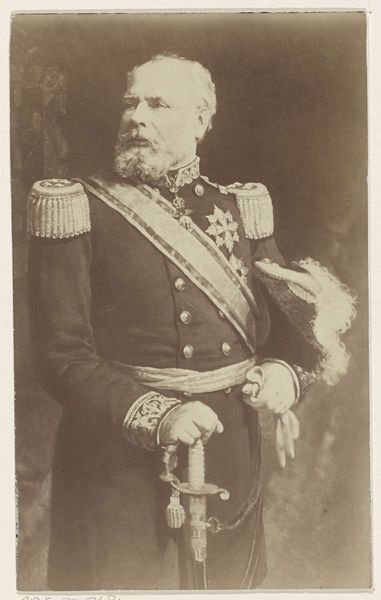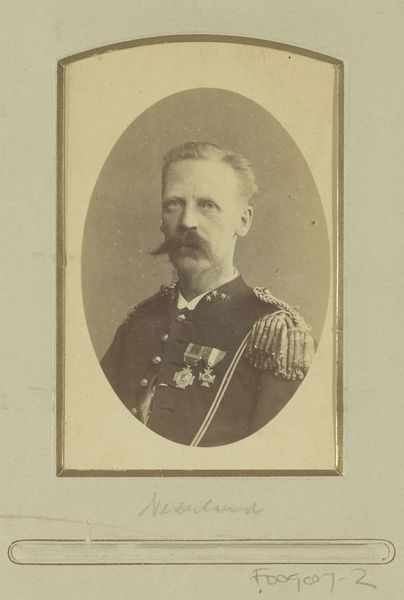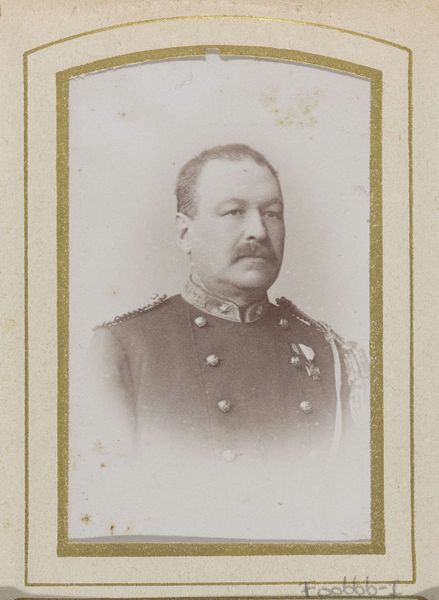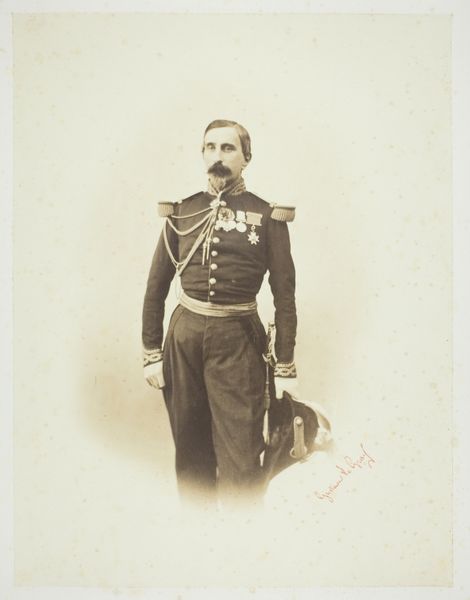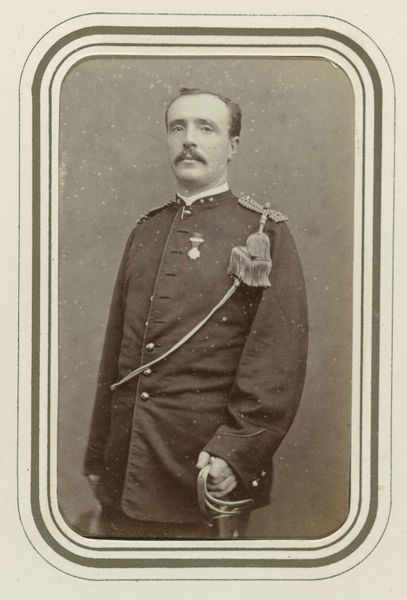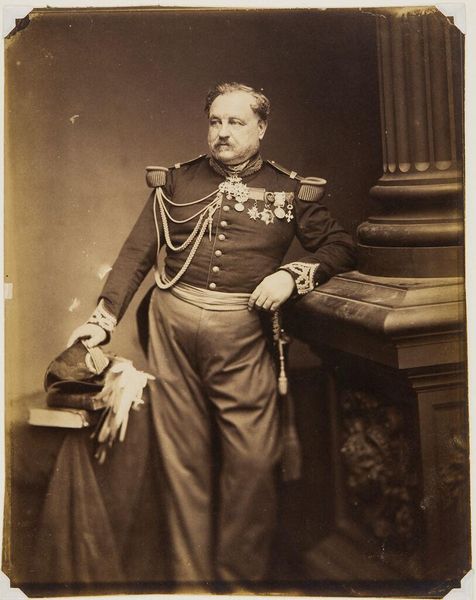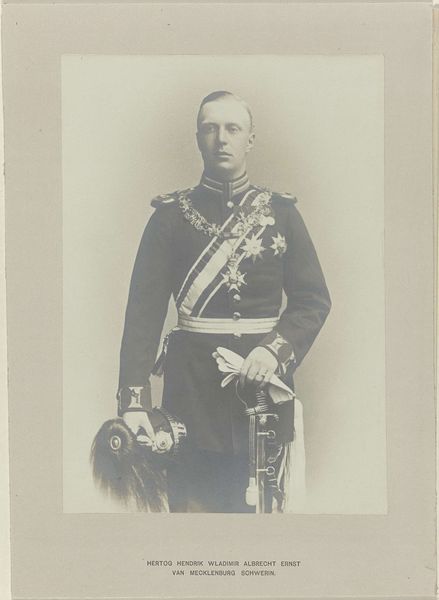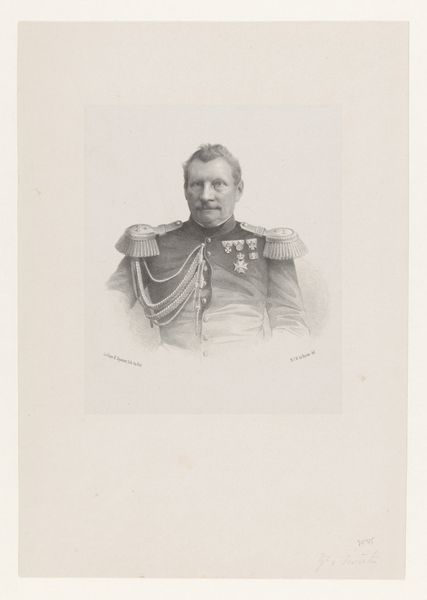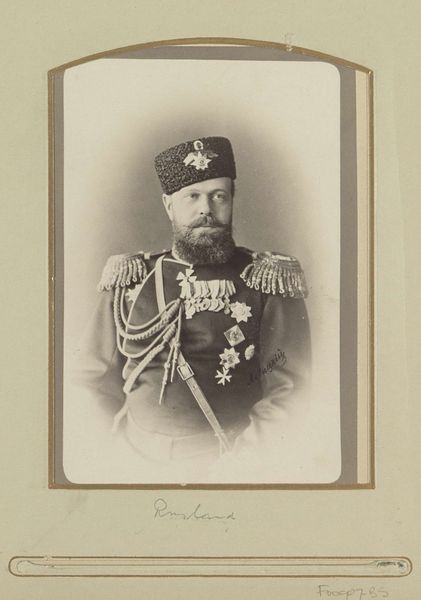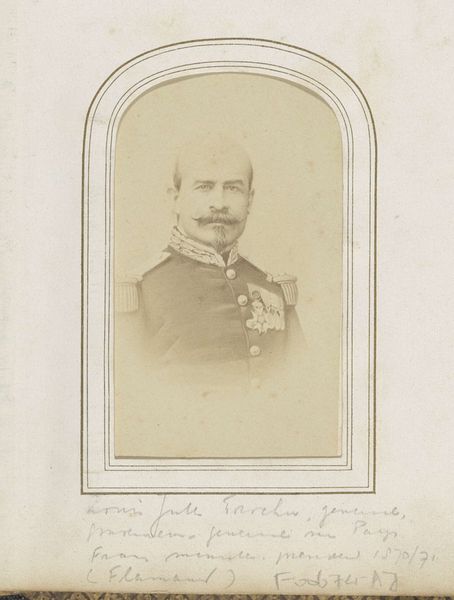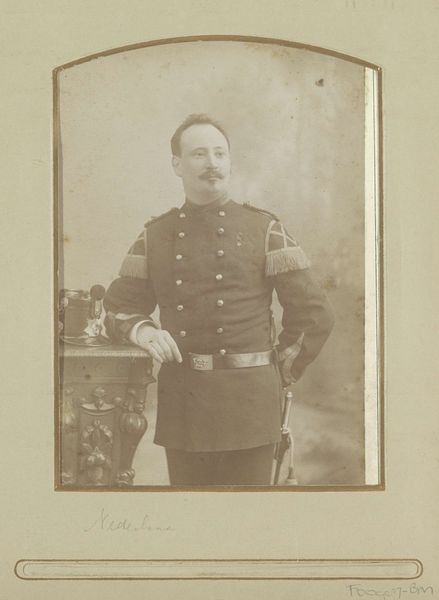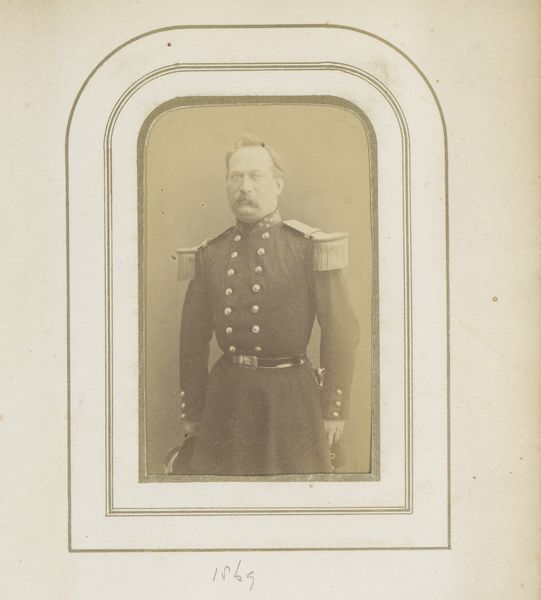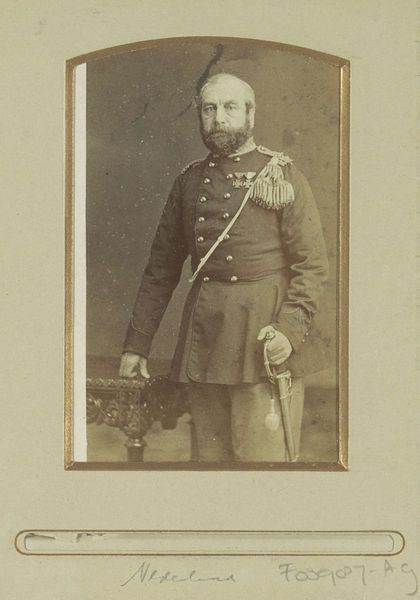
photography, gelatin-silver-print
#
portrait
#
charcoal drawing
#
photography
#
historical photography
#
gelatin-silver-print
#
19th century
#
history-painting
#
realism
Dimensions: height 94 mm, width 62 mm
Copyright: Rijks Museum: Open Domain
Albert Greiner made this photograph of a presumed Dutch military man sometime in the mid-19th century. The collodion process, used here, involved coating a glass plate with light-sensitive chemicals, then exposing and developing it. The result is a finely detailed negative image, from which paper prints like this could be made. Notice the sharp focus on the officer's face, contrasted with the soft textures of his uniform and the tassels on his shoulder. This was a deliberate choice on Greiner’s part, highlighting the sitter's authority and status. The medals worn on his chest suggest a history of service and bravery. But in a way, these details are secondary to the photograph itself, which also operated as a status symbol. The collodion process was relatively affordable, but it still required specialized knowledge and equipment. Photography offered a way for the rising middle class to participate in the culture of portraiture. It democratized the practice, but also commodified it. So, as we consider this image, let’s remember that it's more than just a picture of a man; it's a product of a rapidly changing society, where art, technology, and commerce were increasingly intertwined.
Comments
No comments
Be the first to comment and join the conversation on the ultimate creative platform.
